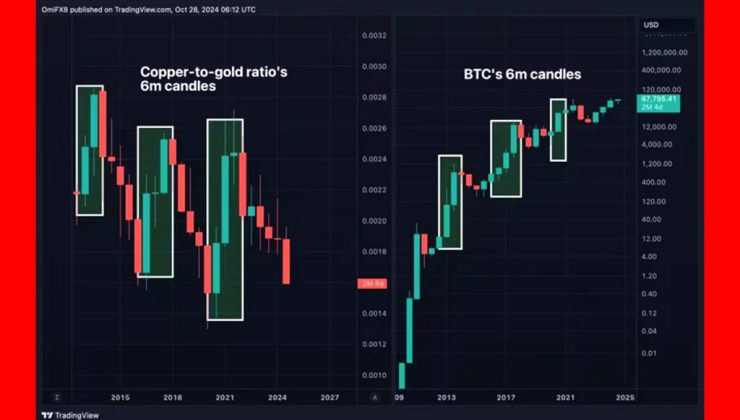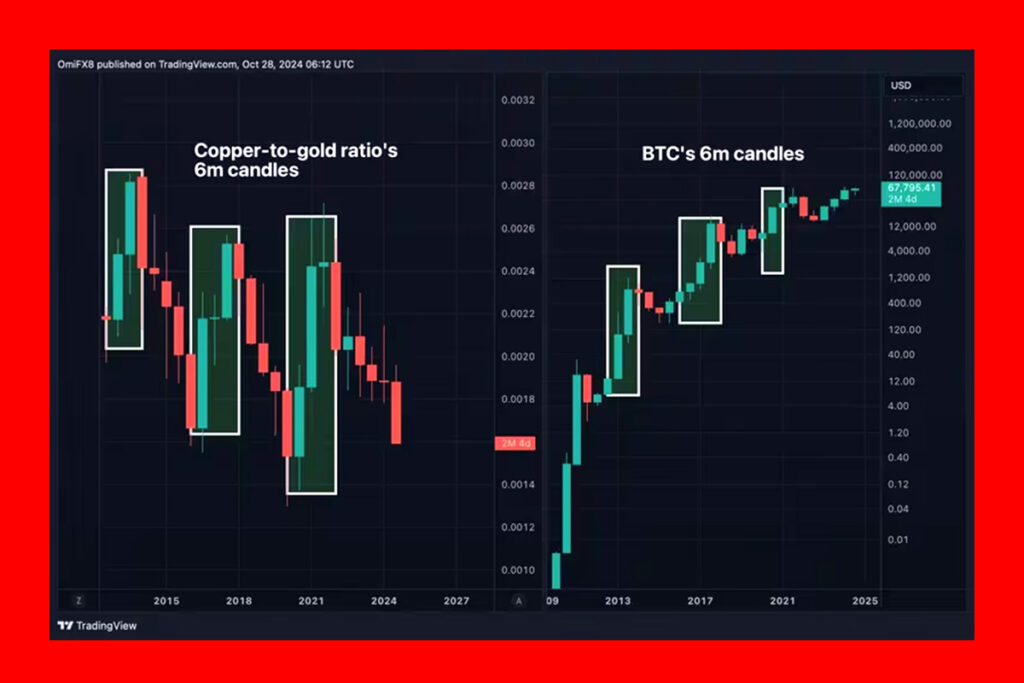

Bitcoin bulls can take heart from several factors, including the growing likelihood that pro-crypto Republican nominee Donald Trump will win the next U.S. presidential election and the anticipation of a Fed rate reduction. Nevertheless, the constantly declining copper-to-gold ratio, which is a warning indicator for risky assets like cryptocurrencies, is ongoing.
Data source TradingView reports that the ratio, which is the price per pound of copper divided by the price per ounce of gold, has fallen to its lowest levels of the year, which were last observed in late 2020. Considered a stand-in for investor risk appetite and the state of the world economy, the indicator has fallen more than 15% this year, the most since 2018.

The fact that the ratio has decreased by 10% since China, the world’s largest importer of commodities and factories, announced a series of stimulus plans in late September to boost its faltering economy is perhaps more problematic. The ongoing decline may indicate a more dire economic outlook that risk assets are likely ignoring. As an industrial metal, copper has historically responded favorably to China’s stimulus plans and typically performs well when the world economy is growing. In contrast, gold is seen as a safe haven. As a result, a declining copper-to-gold ratio is frequently interpreted as a warning sign to sell.
According to CoinMarketCap data, Bitcoin was trading close to $68,420 at the time of writing, up 100.83% for the year. The bulls have, however, continuously failed to establish a new base of over $70,000 since the first quarter, when the majority of gains were made. According to risk-off indications, the decline in the copper-to-gold ratio started in May. Bitcoin fell from $65,000 to $50,000 in July as the decline gained momentum, foreshadowing the temporary risk aversion in financial markets in early August.
For more up-to-date crypto news, you can follow Crypto Data Space.
 1
Memecoins Surge as “Peanut the Squirrel” Becomes a Viral Icon in Solana’s DeFi Market
1
Memecoins Surge as “Peanut the Squirrel” Becomes a Viral Icon in Solana’s DeFi Market
 2
Strong September Jobs Report Alters Fed Rate Cut Expectations
2
Strong September Jobs Report Alters Fed Rate Cut Expectations
 3
The Future of Financial Reporting: Crypto News and Emerging Trends in Digital Assets
3
The Future of Financial Reporting: Crypto News and Emerging Trends in Digital Assets
 4
Crypto Landscape: Job Cuts Amid Financial Gains
4
Crypto Landscape: Job Cuts Amid Financial Gains
 5
Ethereum Researcher Justin Drake Steps Down from Eigen Foundation, Signals Full Commitment to Layer-1 Development
5
Ethereum Researcher Justin Drake Steps Down from Eigen Foundation, Signals Full Commitment to Layer-1 Development